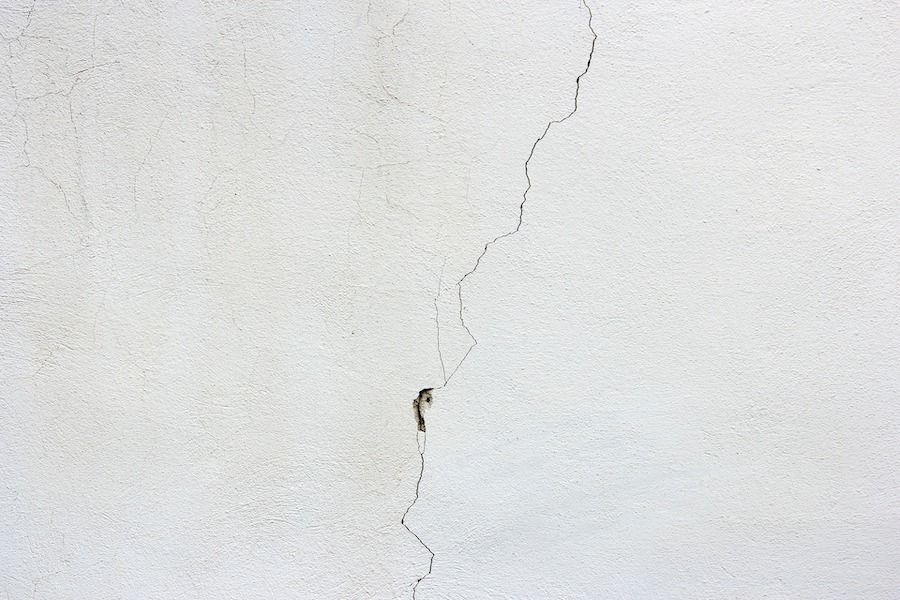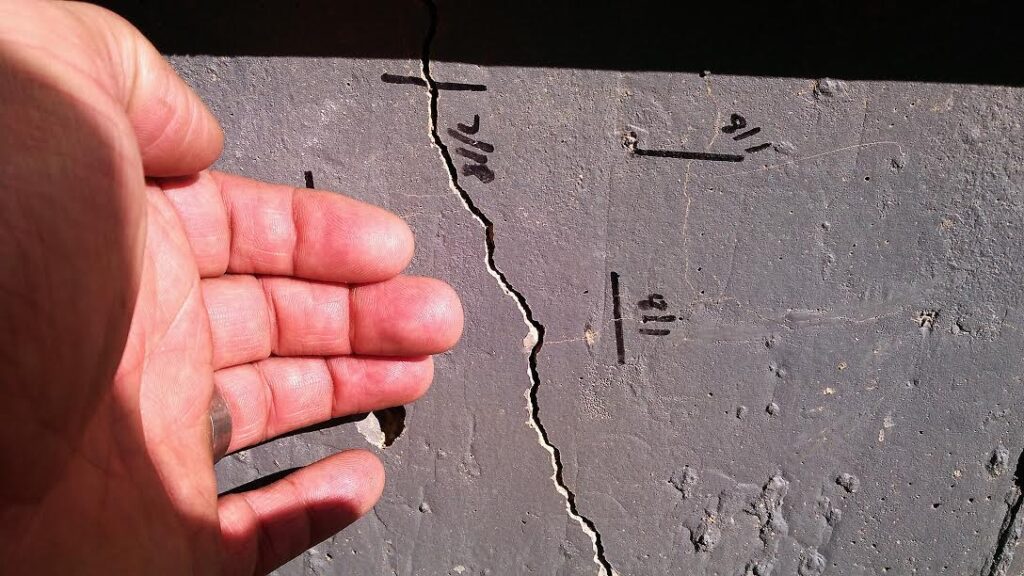A Structural foundation crack can be a homeowner’s worst nightmare, but it’s a problem that can happen to anyone. Foundation cracks can occur due to a variety of factors, such as poor drainage, and concrete slab damage.
Recognizing the signs of foundation problems early can help prevent further damage and costly repairs. In this article, we’ll discuss the types of cracks, evidence of foundation problems, ways to prevent foundation cracks, and how to repair foundation cracks. We’ll also highlight the importance of seeking professional help from an engineer when dealing with cracks to ensure
Normal Vs. Problematic Foundation Cracks
Foundations are crucial components of any building structure, as they provide the necessary support for the entire building. However, a cracked foundation can pose a significant threat to the structural integrity of the building. Therefore, it’s essential to understand what causes foundation cracks, how to prevent them, and how to address foundation problems
Cracks can appear everywhere around your home. Inside, outside, in the foundation and on the ceiling. There are certain cracks that occur due to natural settling and will typically come to a halt.
Then, there are cracks that are cause for concern. Let’s take a look at some different types of cracking.
Types of Foundation Cracks
Vertical Foundation Cracks:
These are cracks that run straight up and down and are the most common type of foundation crack. They often occur as a result of settling, and are typically not a cause for major concern unless they are wider than 1/4 inch.
Horizontal Cracks:
These are cracks that run horizontally along the foundation wall, and can be a sign of a serious structural problem. They are often caused by excessive pressure from the soil outside the foundation, and should be inspected by a professional.
Diagonal Foundation Cracks:
These are cracks that run diagonally across the foundation wall, and can be a sign of both settling and a structural problem. They can be caused by movement, poor construction, or water pressure

Stair-Step Cracks:
These are cracks that follow a step pattern along the foundation wall, and are typically a sign of serious structural foundation cracks. They are often caused by differential settling, which occurs when one part of the foundation settles more than another

Stair Step cracks leading towards doors and windows are often signs of a structural problem.
Hairline Cracks:
A Hairline Foundation Crack is typically less than 1/16 inch wide and is typically not a cause for concern. They can occur as a result of the normal settling of a house, and are often found in newer homes or homes with a concrete foundation wall
As concrete cures, it shrinks. This shrinkage causes hairline cracks. This is something to keep an eye on, but typically nothing to worry about.
Foundations can bend, but not very much. If they start to bend too far the cracks will grow. Poured foundations will typically have small hairline cracks due to settling.

Structural Foundation Cracks:
Structural cracks are normally wider than 1/8 inch and can be a sign of serious structural damage. They are often caused by excessive settling or lateral pressure, and should be inspected by a professional immediately.
Bending and moving can cause larger cracks. Most foundations are reinforced by rebar, which helps to provide additional support and keeps things from moving too far.
Although, if there is extensive movement below, the rebar will fail. A larger Foundation crack can be a sign that you need to take action. This usually means there is shifting, shearing, and potentially severe movement from the foundation.

Block foundations will typically show their stress by revealing large gaps between the blocks that resemble steps.
Non-Structural Cracks:
These are cracks that do not affect the structural integrity of the foundation. Non-structural cracks are often cosmetic in nature but can still lead to costly repairs and may be evidence of other problems such as waterproofing or plaster delamination. They can occur as a result of shrinkage, concrete curing, or temperature changes.
It’s important to note that while some foundation cracks may not be a cause for concern, others can indicate serious problems. If you notice any structural or non structural cracks in your foundation, it’s important to have them inspected by a professional to determine the cause and extent of the damage.
Typical Causes of Foundation wall Cracks
Several factors can cause a foundation crack, including poor soil conditions, inadequate drainage, poor construction, and even natural disasters such as earthquakes.
The age of a home’s foundation can also contribute to foundation problems, as older concrete foundations may be more susceptible to cracks. Additionally, foundation movement can occur due to soil pressure, soil movement, soil creep, and shifting soil.
Trees planted too close to a home’s foundation can cause damage to foundations and foundation walls due to their root systems, and poor drainage can lead to hydrostatic pressure, which can cause foundation cracks
Preventing Foundation Cracks
One effective way to prevent a foundation crack is by having a professional assess the building before undertaking any renovations or alterations. An engineer is trained to identify potential issues that could cause foundation problems and can advise on the best approach to avoid them. This is especially important when it comes to older buildings or homes with unique features. A thorough assessment can identify areas where the foundation may need additional support or reinforcement to prevent future cracking.
While it may seem like an unnecessary expense, having an engineer assess the building before any renovations or alterations can save homeowners a lot of money in the long run. It can prevent the need for costly foundation repairs down the line and ensure the structural integrity of the building. Additionally, a professional assessment can provide peace of mind to homeowners, knowing that they are making informed decisions about their home’s foundation repair.

Preventing foundation cracks requires proper construction and maintenance of the foundation. During construction, it’s essential to ensure that the soil is adequately compacted and that the concrete mix is appropriate.
Who does the foundation repair?
Working with an inexperienced contractor or without professional advice can only lead to no commitment estimates that end up costing a fortune or crack repair only a few months after completion.
A professional contractor can also ensure that the foundation is constructed according to the highest industry standards. Homeowners can take steps to prevent foundation cracks by ensuring that downspouts are clear and downspout extensions are directed away from the foundation. Regular foundation inspections can also help identify any potential foundation problems before they become more severe.
Signs of Foundation Problems
Here are some common signs to look out for that could be evidence of structural and non-structural foundation cracks:
- Vertical cracks or horizontal cracks in the foundation walls
- Stair-step cracks in the mortar between concrete blocks or bricks
- Diagonal cracks that form at a 45-degree angle
- Cracks in basement walls or floors
- Uneven floors or floors that slope towards one area
- Windows and doors that stick or do not close properly
- Gaps between walls and ceilings or floors
- Cracks in the drywall or plaster
- Bulging or leaning walls
- Cracks in the exterior walls or brickwork
If you notice any of these signs, it is important to act fast and seek professional attention. Ignoring foundation damage can lead to further damage and costly repairs in the future. At Level, our foundation expert can assess the extent of the damage and recommend appropriate repair options to prevent further structural damage
Foundation Repair
Repairing foundation cracks is a task that should be left to professionals, as the cause and extent of the damage must be assessed before any repair work is undertaken. A structural engineer can identify the cause of the cracks and recommend the most appropriate repair options.
Some common repair options include:
- Filling the crack with epoxy or polyurethane foam to prevent water from seeping in.
- Installing carbon fiber strips or steel reinforcement to reinforce the foundation walls.
- Installing helical piers or push piers to stabilize the foundation and prevent further movement.
- Excavating around the foundation and installing waterproofing systems to prevent water damage.
Each repair option has its own advantages and disadvantages, and the choice of the most appropriate solution depends on the specific situation. Therefore, it is recommended that a foundation repair contractor assess the situation and recommend the most appropriate solution for repairing the foundation problem.
Crack Repair,
foundation cracks can be a serious problem for any homeowner. They can occur due to a variety of factors, such as soil movement, poor drainage, and structural problems. It is important to recognize the signs of foundation problems early to prevent more damage and costly repairs.
There are several types of foundation cracks, including vertical, horizontal, stair-step, and diagonal cracks. While some cracks may be non-structural and easily repairable, others may be an indication of more serious damage that requires immediate attention.
Preventing foundation cracks involves ensuring adequate drainage, keeping the soil around the foundation properly compacted, and addressing any structural problems. It is also highly recommended to have a structural engineer assess the building before undertaking any renovations or alterations.
Conclusion
Repairing foundation cracks is a task that should be left to professionals, as the cause and extent of the damage must be assessed before any repair work is undertaken. A structural engineer can identify the cause of the cracks and recommend the most appropriate repair options.
Summary
Keep an eye out for:
- Foundation Cracking
- Foundation Settlement
- Hairline crack
- Drywall cracks
- Ccracks in basement floor
- Movement in window frames and door frames
- Bowing/Bending/Shifting
- Horizontal crack in the concrete slabs or walls
- Noises caused by moving and shifting
- Doors and windows that don’t work properly
- Larger than normal spaces between joints
- Other signs small cracks
If you see any cracking, keep an eye on it. If it is larger than a hairline, or headed toward a window or door, give us a call to come take a look at what is causing it.
Don’t ignore, and don’t replace, without first getting an expert’s eyes on it. This is possibly your largest investment, make sure you plan for its future.
Give us a call and schedule a licensed structural engineer to come to your house.







One Response
My cousin has noticed that she has some cracks and spots on her foundation and in her basement. She would really like to get it repaired by a professional so that it will be more durable. It was interesting to learn about how the cracking can be caused by moving soil.